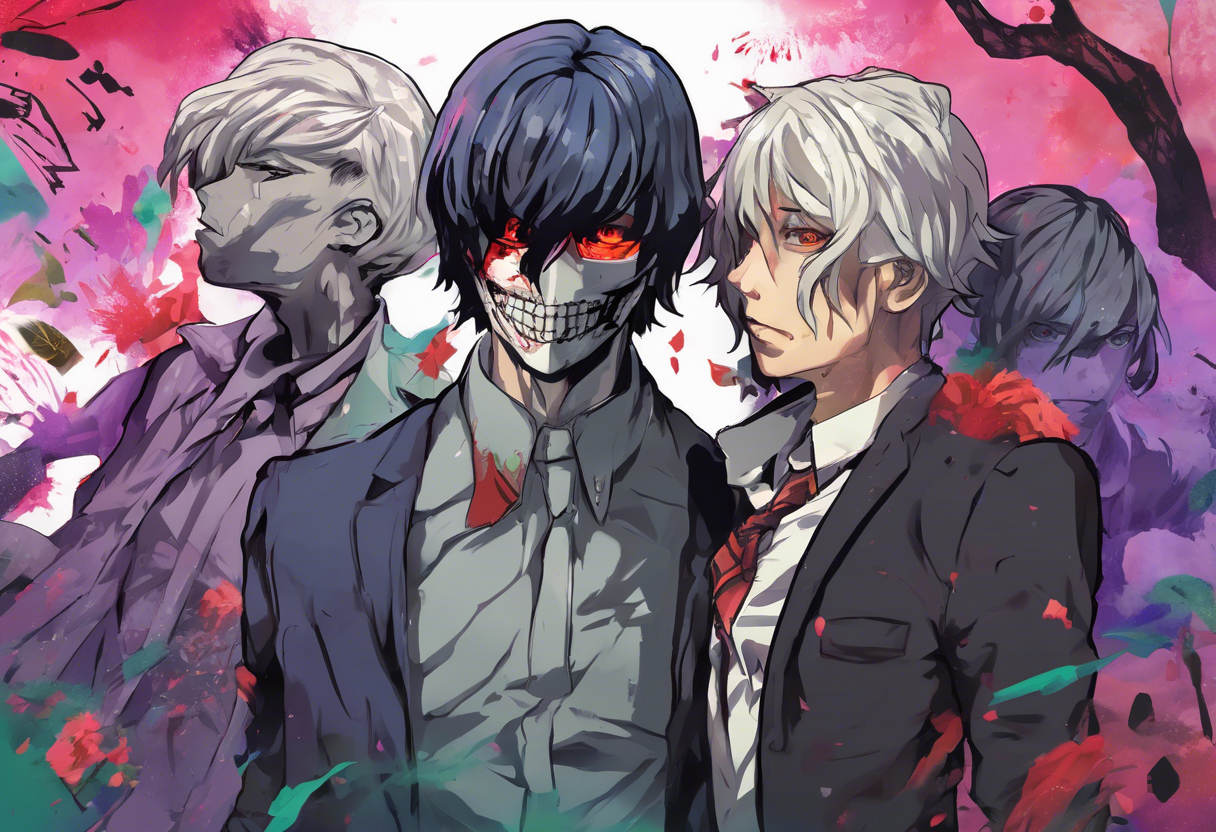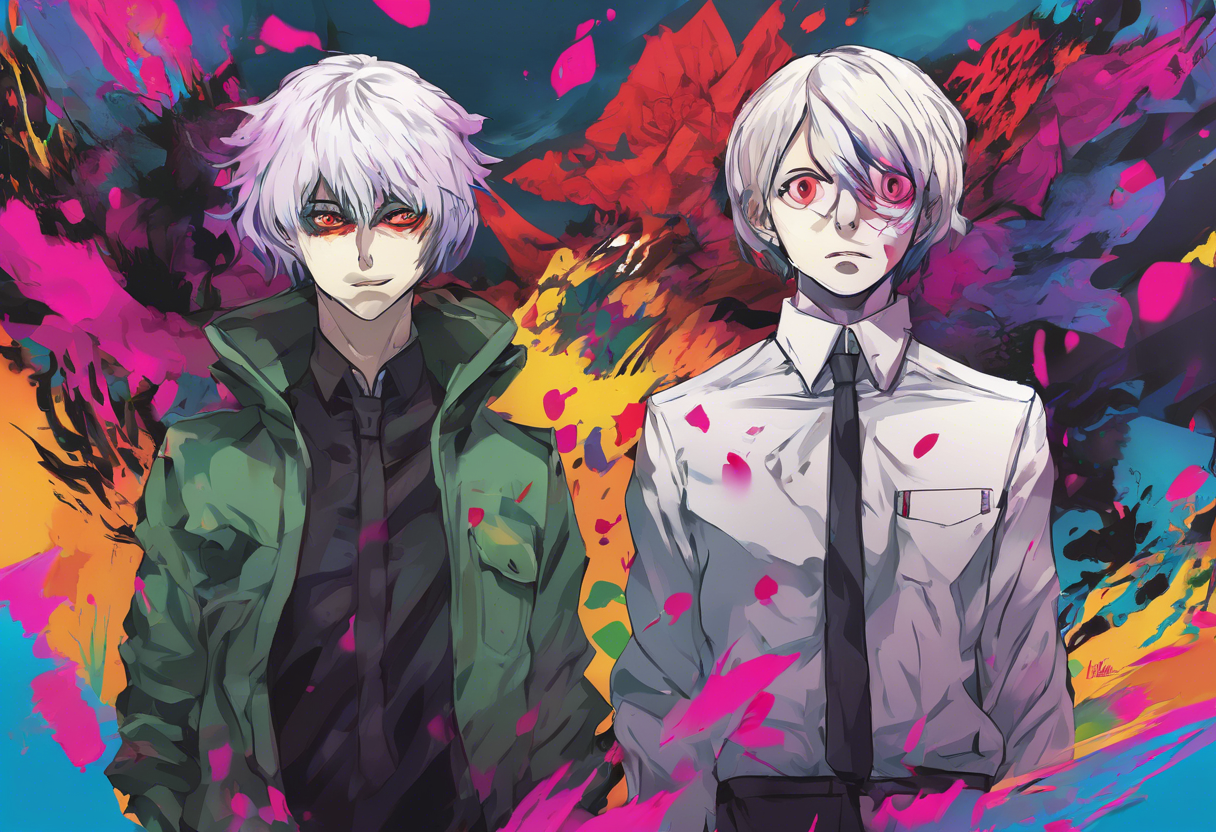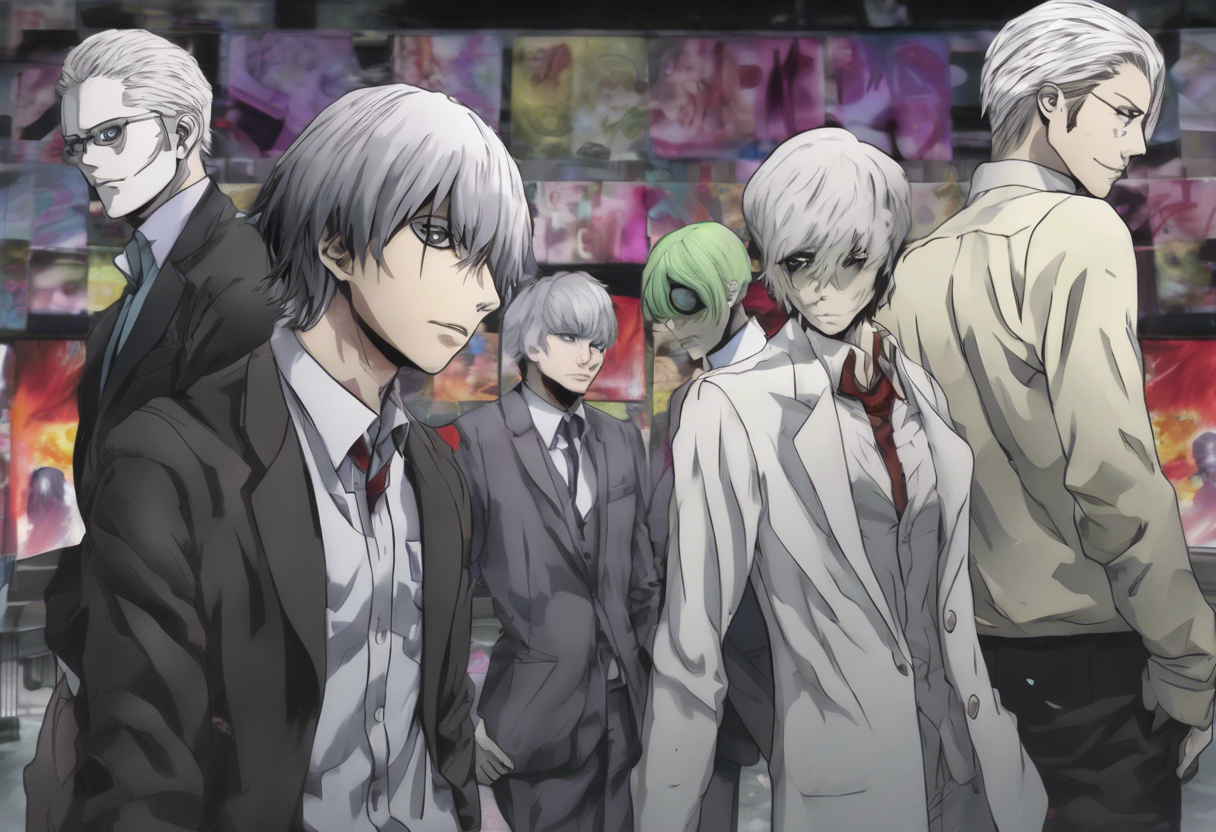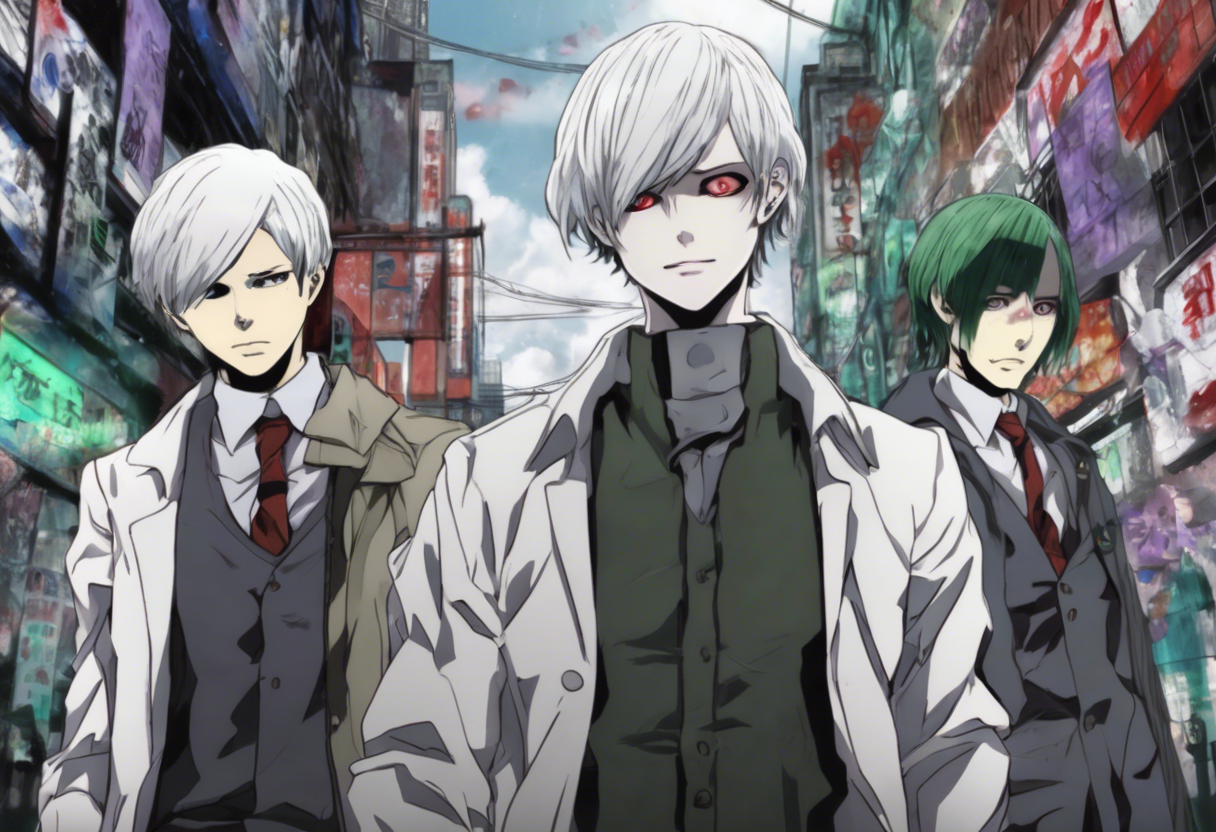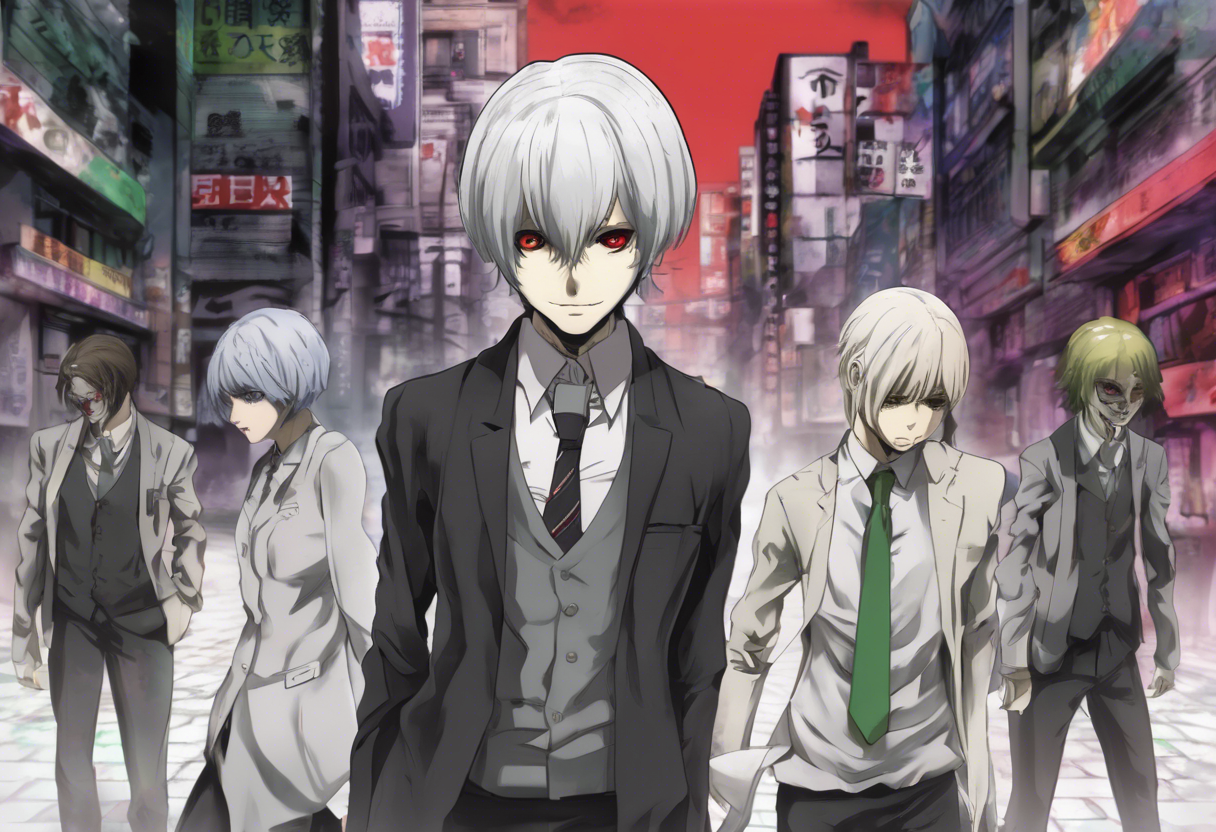Contents
Tokyo Ghoul:re – Episode 33: PLAY: Departed Spirit
Introduction
Tokyo Ghoul:re – Episode 33: PLAY: Departed Spirit, is a pivotal episode in the second season of the anime series Tokyo Ghoul:re, which is a continuation of the original Tokyo Ghoul series. The episode was directed by Toshinori Watanabe and aired on May 15, 2018. This series, based on the manga by Sui Ishida, is produced by Pierrot and has garnered significant attention for its dark and complex exploration of the coexistence between humans and ghouls in an alternate version of Tokyo.
The Tokyo Ghoul universe is renowned for its intricate world-building, where ghouls, supernatural beings that must consume human flesh to survive, live secretly among humans. The Commission of Counter Ghoul (CCG), a special task force, is dedicated to hunting down and eliminating ghouls, creating a tense and often violent environment. Episode 33 stands out due to its intense character developments and the escalation of conflicts that drive the narrative forward.
Plot Summary
The episode begins with a dramatic turn of events as Kijima releases a shocking video on the CCG website, depicting the brutal torture of Yuuma, a member of the Rose gang, in an attempt to provoke them into action [2][3].
Meanwhile, at the Tsukiyama Estate, Shuu Tsukiyama is in a state of despair over his son’s condition. Shuu Tsukiyama, known for his eccentric and violent tendencies, has been recklessly consuming both ghouls and humans, leading to a severe deterioration in his health. However, upon seeing a photo of Haise Sasaki, who is actually Ken Kaneki in a state of amnesia, Tsukiyama’s demeanor changes dramatically. He becomes determined to see Haise, believing that Kaneki’s presence could restore his memories and possibly his health [1][4].
Tsukiyama’s obsession with Kaneki is rooted in their past interactions and his deep-seated desire to reconnect with the person he once considered a friend. This obsession leads him to make several failed attempts to communicate with Haise, who remains unaware of his true identity as Kaneki. In a desperate bid to isolate Haise and restore his memories, Tsukiyama orchestrates an attack on the Quinx Squad, using bribed Aogiri members to create chaos. However, this plan goes awry when Yamori’s old gang accidentally targets Haise instead, leading to a fierce battle.
During this battle, Haise’s instincts as a ghoul resurface, and he uses his kagune to defend himself and his teammates. Saiko Yonebayashi, a member of the Quinx Squad, is nearly killed but is saved by Amon Kotaru, who is revealed to be alive after being presumed dead. This revelation adds another layer of complexity to the story, as Amon’s return has significant implications for the characters and the plot.
The episode also delves into the emotional struggles of the characters, particularly Haise, who is torn between his identity as a CCG investigator and his suppressed memories as Ken Kaneki. Hinami Fueguchi, who has discovered Haise’s true identity, and Saiko, who is deeply concerned about Haise’s well-being, both play crucial roles in this narrative arc. Their actions and decisions reflect the deep bonds and conflicts within the group, highlighting the themes of identity, loyalty, and the blurred lines between good and evil.
As the episode progresses, the tension between the CCG and the ghoul factions intensifies. The video released by Kijima continues to stir up violence, and the Rose gang, provoked by the brutal treatment of their member, begins to take action against the CCG. This escalation sets the stage for future conflicts and underscores the volatile nature of the world in which the characters live.
The setting of the episode, primarily the Tsukiyama Estate and the streets of Tokyo, adds to the atmospheric tension. The Tsukiyama Estate, with its opulent yet decaying grandeur, serves as a symbol of the Tsukiyama family’s decline and Shuu’s own mental and physical deterioration. The streets of Tokyo, filled with the constant threat of violence and the hidden presence of ghouls, emphasize the precarious coexistence between humans and ghouls.
The character developments in this episode are profound, particularly for Tsukiyama and Haise. Tsukiyama’s desperation and obsession highlight his complex and often contradictory nature, while Haise’s struggles with his identity and his growing awareness of his past life as Kaneki mark a significant turning point in his character arc.
Themes and Symbolism
Tokyo Ghoul:re – Episode 33: PLAY: Departed Spirit, delves into several central themes that are pivotal to the series. One of the most prominent themes is the struggle with identity, particularly evident in Haise’s character. His dual identity as both a CCG investigator and a ghoul raises questions about the nature of self and how it is shaped by experiences and memories. This theme is further complicated by Tsukiyama’s attempts to restore Haise’s memories, which symbolize the power of the past to shape the present.
Another significant theme is the exploration of morality and the gray areas between good and evil. The characters in this episode, whether they are ghouls or CCG investigators, are often forced to confront their own moral ambiguities. This is exemplified by Haise’s actions during the battle, where he must choose between his duty as a CCG member and his instinctual responses as a ghoul.
The episode also explores the theme of loyalty and friendship, as seen in the relationships between Haise, Hinami, and Saiko. These characters’ actions are driven by a deep sense of loyalty and concern for one another, highlighting the importance of human (and ghoul) connections in a world filled with violence and mistrust.
Symbolically, the Tsukiyama Estate and the video released by Kijima serve as powerful metaphors. The estate represents the decay and corruption that can result from unchecked desires and obsessions, while the video symbolizes the destructive power of provocation and the cyclical nature of violence.
Cultural Impact
The release of Tokyo Ghoul:re – Episode 33: PLAY: Departed Spirit had a significant impact on the anime community. The episode’s intense action sequences, combined with its deep character developments, resonated strongly with fans. The series, in general, has influenced popular culture, with its themes and characters being referenced in various forms of media.
The episode’s portrayal of complex moral issues and the blurred lines between good and evil has also sparked discussions and debates among viewers. This has contributed to the series’ reputation as a thought-provoking and emotionally charged anime.
Critical Reception
Tokyo Ghoul:re – Episode 33: PLAY: Departed Spirit received positive reviews from critics and audiences alike. The episode was praised for its intense action sequences, emotional depth, and the significant advancements in the plot. Critics noted the episode’s ability to balance multiple narrative arcs and character developments, creating a cohesive and engaging story.
However, some viewers expressed concerns about the pacing and the handling of certain characters’ storylines. Despite these criticisms, the episode remains a highlight of the series, appreciated for its dramatic tension and emotional resonance.
Legacy
Tokyo Ghoul:re – Episode 33: PLAY: Departed Spirit continues to be a significant part of the Tokyo Ghoul franchise’s legacy. The episode’s impact on the series’ narrative and character arcs is undeniable, setting the stage for the climactic events that follow.
The series as a whole has inspired numerous adaptations, including manga, novels, and video games. The themes and characters introduced in this episode have become iconic in anime culture, influencing other works in the genre.
The enduring relevance of this episode lies in its ability to explore complex themes and emotions in a compelling and visually stunning manner. It continues to inspire filmmakers, artists, and audiences, solidifying its place in the history of anime.

